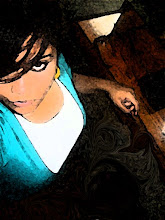
All cultures have assimilated; its part of human nature to want to belong or fit in somewhere in society even it’s a struggle. Although some people don’t want to assimilate in order to fit in with social constructs. They strive form a paradigm shift and question how invisible "white power base maintains its dominant position precisely by being consistently overlooked" (Benshoff, Griffin). We see call for paradigm shifts and new views more so in art, by those artist/ people with varying identities. We see the call to question social constructs and norms thought their work.Social Constructs affect everyone life in some aspect despite there many accomplishment in life. Gordon Parks had a career that any photographer dreams of for twenty years he worked for Life magazine there his work become iconic, he also worked for Vogue. He was the first African American photographer to do so. He also dabbled in other media's. It would seem like he was winning the fight against the "man". However he was in love with fashion designer Gloria Vanderbilt and at the time marriage was illegal for biracial couples.
Freedom was the theme of all his work.His "strategy of appropriation allows park's image to make this larger statement about social exclusion and inequality". (Sturken,Cartwright) American Gothic chronologically depicted Chicago’s southside, before the civil rights movement. His, photograph is a remake of the famous painting American Gothic by Grant Wood (1930). This painting has been remade lots of times with comically and also some question the evolving social changes in America. However Gordon Parks photo calls to question social exclusion, what life is in Chicago’s south side or what life is like for hard working minorities in America. He has replaced the pitchfork for a broom. In the photo he embodies the character, Ella Watson. He seems to be looking away form the camera as if taking this picture is taking time away form her. She works cleaning up after others, working for freedom if not for her then for her grandchildren. It looks like maybe the photo was taken in the basement of the office that she works at. The light is dim highlighting the room circularly, lighting the flag, face and parts of the broom and mop. The flag in the back is kind of blurred the stars are seem like circles . The flag it=s bended on the side and wrinkled unlike the typical crisp star spangled banner were used the seeing. The flag also replaces the wooden house as seen in the Grant Wood painting. Perhaps saying that Not everyone in America was the a classical wooden farmhouse.
Sturken and Cartwright say that the photo " is a bitter commentary on the discrepancy between the codes of this black woman office cleaner with her broom and mop before and American flag."Parks was calling to question the painting by Grant Wood by playing off the painting with the broom and mop her was showing how not all of America was represented in the painting.
The struggle for freedom began with slavery. It is a reoccurring theme in many African American artist work .Carrie Mae Weems was asked by Getty Museum in Los Angles,California to responded to velvet framed pieces of slavery photos. As the title of her works state from seeing the photos she saw what happened and cried. Her work with this photos rejects and turns history on its head. She added text and chronology placed the photos. Exploring woman's role throughout slavery. She explores individuals roles as a house,kitchen slave. She used first person text for intimacy. The red photos create a sense of warm and brings back humanity lost to these women. There no longer scientific profiles there human begins. The tone of the photos and the text calls into question our role in society and history.
All images are full of codes it shown in the framing, angle, focus, lighting, costume,setting, performance. Which creates different interpretations to get conversations started to create change.To move the paradigm shift forward. For future generations even if its just one person.
Works Cited:
Harry M Bensoff,Sean Griffin. America on Flim Representing race class, gender and sexuality at the movies. Malden,MA,Blackwell Publishing, 2007. pg.55
Marita Sturken,Lisa Cartwright.Practices Of Looking and introduction to visual culture. second edition. 2009. oxford university press,new york new york. pg82
Marita Sturken,Lisa Cartwright.Practices Of Looking and introduction to visual culture. second edition. 2009. oxford university press,new york new york. pg82

